This story originally appeared in the September 2018 edition of The Australian Women’s Weekly.
Katie Little vividly remembers when she realised her mum, Jeanne, was “a bit different” from other parents of girls at Sydney’s prestigious Kambala school, and it wasn’t the day she arrived for pick-up wearing purple hot pants and a matching afro wig.
As a school bus roared towards the then 10-year-old Katie, the girls from a nearby high school hung out the windows, greeting her with a chorus of her mother’s famous catchcry, “Hello daaahling!”
“It was like a flock of cockatoos screeching all the way down the hill,” Katie laughs, “but everyone knew who my mum was.”
Katie ferociously clings to these memories because they’re all that she has left of her larger-than-life mum. Jeanne Little turned 80 last month but sadly the TV trailblazer with the raucous voice and razzle-dazzle personality has been silenced by dementia and no longer recognises her only child.
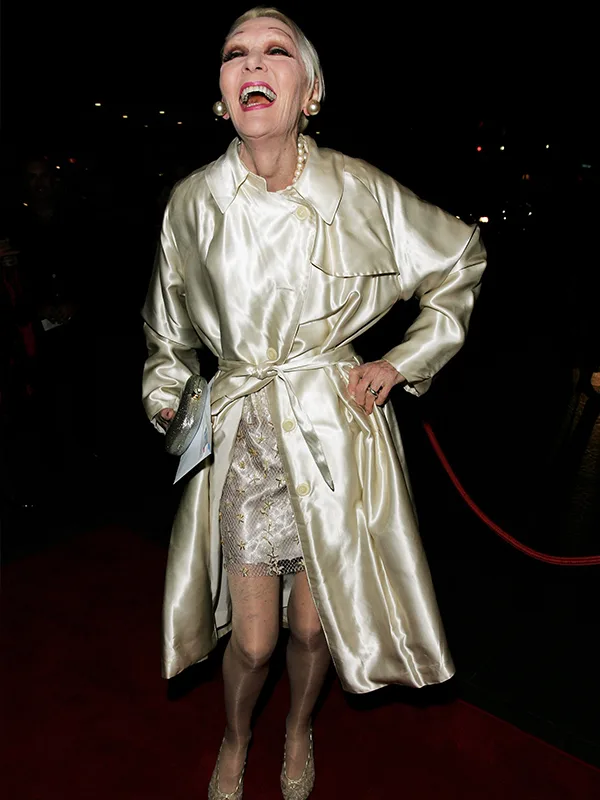
“Mum wasn’t just the life of the party, she was the party.” (Image: Getty Images)
“Mum wasn’t just the life of the party, she was the party – so vibrant, always the centre of attention, so generous and so much fun. She waltzed into the darkness of dementia with a smile on her face, all happiness and joy, as she’d always done. Now she is a body in a bed. It is the most horrible disease,” Katie says.
Dementia is now the leading cause of death among Australian women and Katie Little has penned a heartfelt and at times hilarious memoir, Catch A Falling Star, honouring her mum and sharing the brutal reality of life with dementia, in many ways, giving voice to Jeanne one last time.
“When Mum was diagnosed, we had no idea what would happen or where this would take us. I wish we’d known. Mum brought a little spark of magic to everyone. She proved that everyone could dream bigger and be something wonderful. I know she would want me to be getting a laugh out of an otherwise dark situation.”
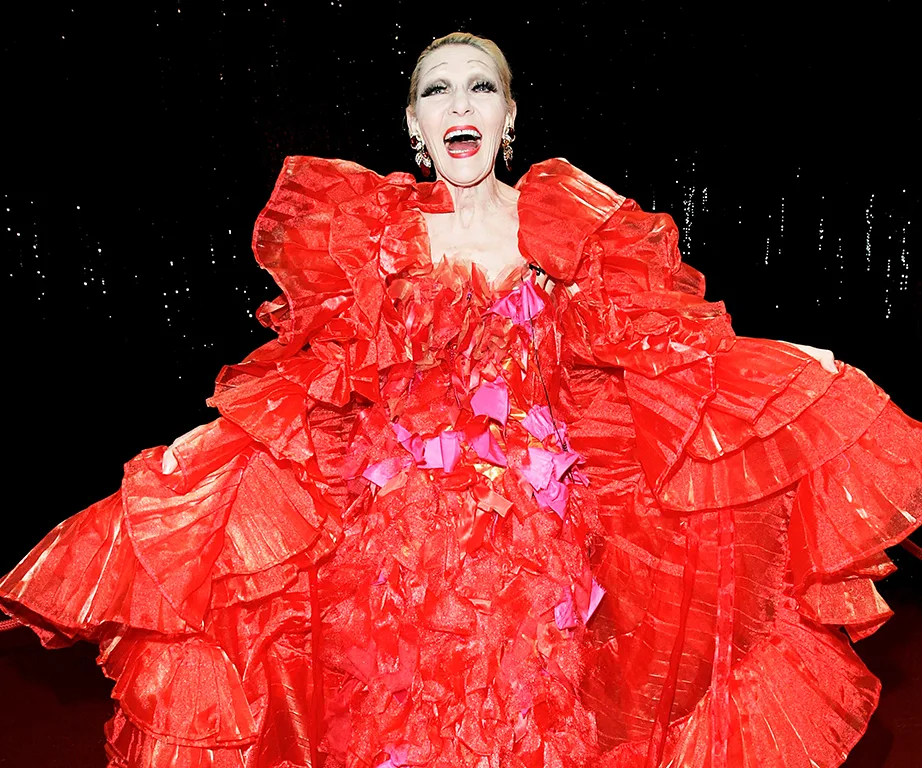
Jeanne Little is now a shell of her former self. (Image: Getty Images)
Mischief and genius
Jeanne Little was an Australian TV icon. She burst onto our screens on The Mike Walsh Show in 1974 and with her madcap personality, a cross between Phyllis Diller and Lady Gaga, and that unmistakable voice, she instantly became a star.
Her famed “Hello daaahling” became a clarion call for the housewives of Australia to stop whatever they were doing and see what mischief Jeanne was cooking up. She was deliberately outrageous and found her niche creating her unique “kitchen couture”.
She paraded dresses made from toast; hats decorated with sausages and mashed potato, French fries and ice-cream cones; a collection of couture gowns crafted from garbage bags and Chux wipes; and a wedding gown made from toilet paper.
“Dad [Barry] and I spent a week flattening out old milk bottle caps while mum sewed them onto a dress and it looked amazing, like something very high fashion off a catwalk,” Katie says.
“She was very resourceful because she had no budget for her segments. Her brief was to literally make something out of nothing. She made clothes out of plastic bags to look like leather, she made aluminium foil look glamorous, she was very inventive.”
WATCH: Jeanne Little’s crazy fashion. Post continues below…
Jeanne instantly found a rapport with audiences and was appearing on the show several times a week. “Hello daahlings,” she’d squeal as she bounced on set in her colourful wigs and over-the-top false eyelashes.
Barely two years after she first appeared on The Mike Walsh Show, Jeanne won the Gold Logie for most popular personality, and by the mid-1970s she was the highest paid woman on Australian TV. Along with Denise Drysdale and Noelene Brown, she pioneered roles for comedic women on television.
“I’m just having fun,” she said in an interview with TV Week after her Logie win. “It’s outrageous that I get paid for it.”
WATCH: Best moments from Logies past. Post continues below…
Jeanne’s is the consummate overnight success story. One morning, when a guest on The Mike Walsh Show dropped out, the producers turned to the local newspaper for ideas to fill the spot. There, on page eight, was the heavily pregnant Mrs Jeanne Little of Paddington, resplendent in a flamboyant maternity dress she’d designed herself.
They rang to see if she was available to come in and model her outlandish maternity wear. She jumped at the chance and no sooner had she hung up than a cab was on her doorstep whisking her off to the Channel Ten studio.
READ MORE: Duchess Meghan’s best maternity fashion moments.
“Mum thought maternity clothes were dull, so she made her own,” Katie explains.
“She was a brilliant designer and seamstress and made all of her own clothes. She had one maternity dress with pink elephants marching across the hem and another with a big red target on the belly and a matching handbag with a quiver of arrows. The segment went so well they invited her to come back on again and again, and that was how it began. It’s a real-life Cinderella story.
“Mum was a natural performer and so intelligent. People thought she was crazy and ditzy, and she played that role, but she had a very sharp mind and when the camera switched on, she knew what to do to entertain.”
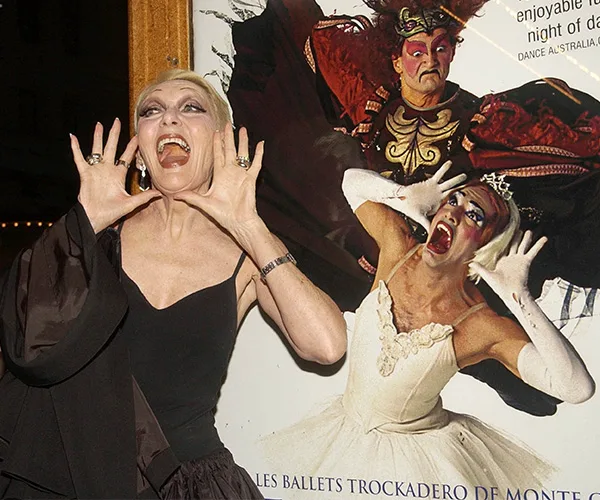
Katie says her mum was a natural performer. (Image: Getty Images)
It was Jeanne’s natural wit, uncanny comedic timing and self-deprecating humour that caught the eye of Mike Walsh. They quickly developed a rapport on set and Jeanne very easily adapted to the pressure of a live audience.
Katie, an only child, was by her mum’s side every step of the way. When Jeanne was on air, a team of famous “aunties”, like Ita Buttrose, would watch her in the greenroom.
“I was the magician’s assistant and I took my job very seriously,” Katie says, recalling how they’d pile into the car with Jeanne in her jeans and Dunlop volleys juggling bags of gowns she’d sewn that week and Styrofoam heads draped with her wigs.
“Backstage she’d transform herself, with wigs and huge false eyelashes, into this other very glamorous person. I’d be pulling the old glue off the eyelashes and buttoning up her outfit – we were a team and it was really good fun.”
As her TV star grew, Jeanne was offered her own show by the Seven Network and the chance to work in Los Angeles, and despite never having sung, acted or tap-danced, she landed a starring role in the debut Australian production of the Broadway hit Jerry’s Girls alongside Marcia Hines, Debra Byrne and Judy Connelli.
Marcia Hines shared a room with Jeanne when the production toured nationally and fondly remembers their time together: “Jeanne Little is like a box of chocolates, she was always full of surprises. Every day was joyous and filled with laughter and she had a heart of gold.”

Katie Little and her parents. (Photograph supplied and used with permission.)
“Mum loved a party,” Katie recalls. “She was happiest when she had a house full of people.”
“Each year, for my birthday, mum would organise something, often much to Dad’s horror. She couldn’t bear anyone to be left out, so she’d say to me, ‘don’t tell your father,’ and we’d invite not just my class but the whole year level. She’d tell Dad there were 15 or 20 kids coming and 80 would show up. She was such fun, and we had a ball …”
“People would ask me what she was like at home. She was always Jeanne Little – that’s no act. What you saw on TV was how she was at home. On and off-screen, Mum was the same. There was no off button, until now.”
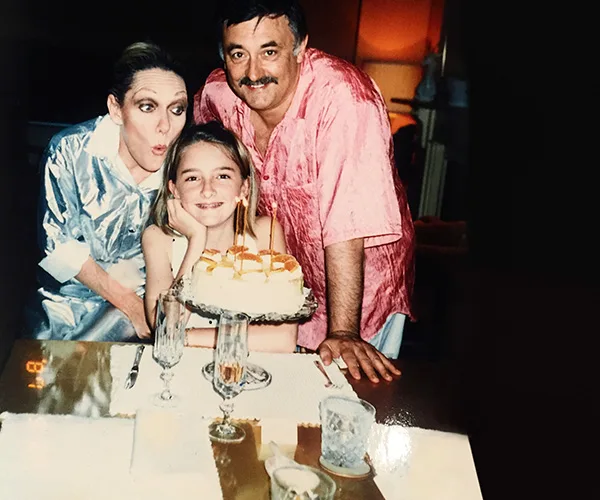
“What you saw on TV was how she was at home.” (Photograph supplied and used with permission.)
The lost years
It’s been 10 years since Jeanne was diagnosed with dementia.
Katie and her husband, Timothy Poulton, assumed they would have time to adjust to the illness and support their much-loved mum and grandma, but her progression was so rapid that Jeanne was placed into full-time care within 12 months of diagnosis. Jeanne’s husband, Barry, is now living in the same nursing home.
Shortly after she was diagnosed, Jeanne was staying with Katie and Tim for a few weeks while Barry was having an operation. It was during that time that Katie realised how sick her mother was.
“It became terrifying. I had to watch her all the time. My children were toddlers and Mum would wander off and leave doors and gates open, and the children would follow. She’d randomly turn on the stove or boil the kettle with the kids right beside her. She looked like my mum and she was happy like Mum, but it wasn’t my mum. It was a car-wreck situation and I felt completely out of my depth. She could barely answer anything beyond a few words and I realised how much Dad had been protecting her. He’d been finishing her sentences and without him, she was lost.”
For Katie, reliving her childhood to write her memoir has at times been bittersweet. The memories of a carefree, bohemian childhood are a stark contrast to the last few years, since her mum has been lost to the insidious effects of dementia, but she wanted the book to be brutally honest in the hope it helps other families to deal with the same issues.
According to Dementia Australia, more than 400,000 Australians are living with dementia, while 250 people are diagnosed with dementia every day.

Reliving and writing about her childhood has been bittersweet for Katie. (Photograph supplied and used with permission.)
In hindsight Katie can see the warning signs, but it eats away at her that she didn’t recognise them sooner. While recently sorting through her mother’s things, she found Jeanne’s favourite silver cocktail purse that accompanied her on every red carpet. Tucked inside were tiny pieces of paper with the names of Jeanne’s closest friends handwritten.
“It was heartbreaking and it all fell into place. It drove us mad that Mum would get up and leave the room all the time when we’d just sat down for dinner or something. I now know she was going to check her purse because she couldn’t remember the names of the people dearest to her.”
“When I was growing up, everywhere we went, everyone wanted a piece of my mum. They’d stop her in the streets. There was always someone wanting to talk to her. We shared her with the public and we always knew that was the price to pay.
“In my head, I’d always thought that at some point I’d get time with Mum, and when I had my children I thought, ‘this is our moment’, but then dementia snatched her away and things fell apart quite quickly. Dementia is beyond cruel because the person you love is still there looking like the person you love, but you can’t connect with them. The one blessing is that she doesn’t have a clue. She’s well cared for and happy but she has no idea who we are.”
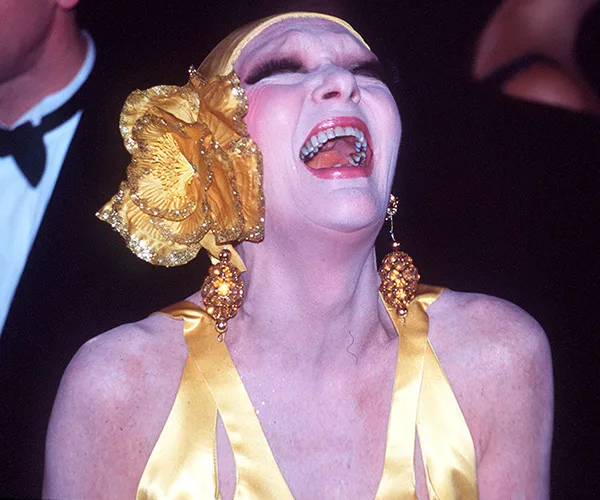
“Every day was joyous and filled with laughter and she had a heart of gold.” (Image: Getty Images)
It’s clear though that, although Jeanne is sadly silenced, she lives on through Katie and her children. Tom, 13, Charlotte, 11, and Hunter, five, each have traits that mimic their much-loved grandma, “Ninny”.
Tom is already carving a name for himself as an actor starring in commercials and a TV series, Charlotte adores dressing up in the huge collection of Jeanne’s costumes that Katie keeps at home, and little Hunter, well …
“When Hunter was tiny, we were playing an alphabet game,” Katie says, “and he had to come up with a word that started with ‘D’. He could barely speak at this stage but, without blinking, he blurted out ‘darling’. I was floored.”
Katie visits her parents each week. They took cake for her recent birthday but couldn’t find Jeanne when they arrived at her nursing home.
“We eventually found her in the middle of a group of residents entertaining everyone,” Katie says. “She had no idea who we were or why we were there. She was having a lovely time, surrounded by people. It was very typical Mum. We laughed – you have to laugh because, if you don’t, you cry and Mum would want us to laugh. It’s the last shred of sunlight that drags us through.”
Catch A Falling Star was published by New Holland in September. September is Dementia Awareness month. Visit the Dementia Australia website or call the National Dementia Helpline on 1800 100 500 for more information.

